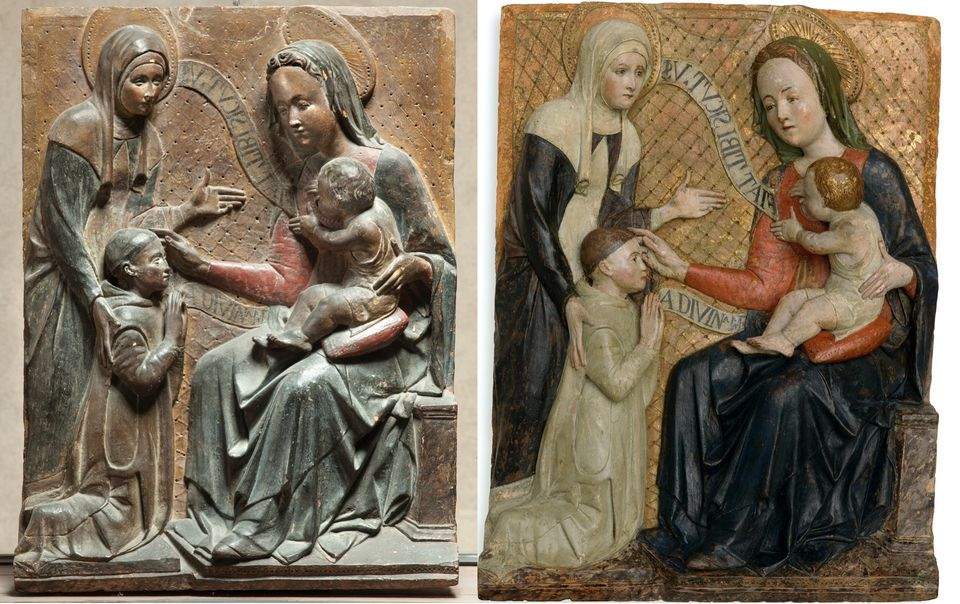Restoration of an important terracotta work of the Lombard Renaissance, the Madonna and Child, Saint Catherine of Siena and a Carthusian prior, attributed to Giovanni Antonio Amadeo (Pavia, 1447 - Milan, 1522) and his workshop, has been completed at the Castello Sforzesco in Milan. The work has already been relocated to Room XI of the Museum of Ancient Art.
The terracotta, the Museums and Institutes of the Castello Sforzesco let us know, was first subjected to various diagnostic analyses and preliminary studies, carried out by the Chemistry Department of the University of Milan (Professor Paola Fermo), the ICAR19 Restoration Laboratory of the Cultural Heritage Department of the Milanese university and the Chemistry Department of the University of Pavia (Professor Marco Malagodi). The analyses were necessary to subsequently proceed with the removal of the thick dark patina clouding the surface of the work, in order to bring to light the original colors and precious materials used. The gradual removal of the patina revealed a rich and vibrant range of colors: from the bright red of the Madonna’s robe and the Child’s cushion, to the white of the Carthusian monk’s habit, St. Catherine’s veil, and the Child’s robe. The patina that had settled on the surface of the terracotta had made the colors almost unrecognizable.
The cleaning carried out by the restorers in charge of the intervention, namely Mario Colella and Silvia Marchioron of the Piccolo Chiostro Study and Conservation Center, showed the clear flesh tones of the characters and the different expressions on their faces, which had been lost altogether before and now allow for a completely different vision and reading of the work. According to the museum, the real surprise, however, was the discovery of the color used to make the Virgin’s veil: green, an unusual color choice, juxtaposed with the traditional blue of the cloak.
From the analysis and measurements made on the work, restorers discovered that the pigments used were the original ones, in fact in use in Lombard art workshops in the 16th century, and it was therefore possible to ascertain that the work retains almost all of its original ancient polychrome drafting. Thanks to the restoration of the work attributed to Giovanni Amadeo, it is also possible to appreciate the use of gold for the child’s hair and for the locks on the Virgin’s face, and it is also possible to admire the decoration in pure gold foil of the background, where the cartouches stand out, which have once again become legible.
Image (before and after restoration): Attributed to Giovanni Antonino Amadeo and workshop, Madonna and Child, St. Catherine of Siena and a Carthusian prior (c. 1470; polychrome terracotta; Milan, Museum of Ancient Art, Castello Sforzesco)
 |
| Amazing restoration at Castello Sforzesco: Renaissance terracotta reveals its colors |
Warning: the translation into English of the original Italian article was created using automatic tools. We undertake to review all articles, but we do not guarantee the total absence of inaccuracies in the translation due to the program. You can find the original by clicking on the ITA button. If you find any mistake,please contact us.